Related Research Articles
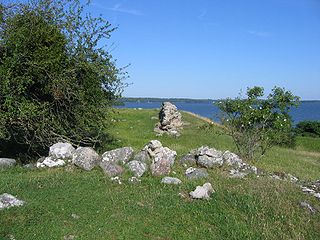
The Swedish nobility has historically been a legally and/or socially privileged class in Sweden, and part of the so-called frälse. The archaic term for nobility, frälse, also included the clergy, a classification defined by tax exemptions and representation in the diet. Today the nobility does not maintain its former privileges although family names, titles and coats of arms are still protected. The Swedish nobility consists of both "introduced" and "unintroduced" nobility, where the latter has not been formally "introduced" at the House of Nobility (Riddarhuset). The House of Nobility still maintains a fee for male members over the age of 18 for upkeep on pertinent buildings in Stockholm.

Göksholm is a medieval Swedish castle located on the southern beach of lake Hjälmaren. It is the oldest privately owned building in Sweden that has been continuously inhabited.
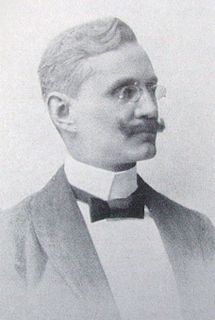
Baron Erik Teodor Marks von Würtemberg was a Swedish jurist and politician. He served as Foreign Minister of Sweden 1923–1924 in the government of Ernst Trygger, representing the General Electoral Union. During his tenure, Sweden recognised the Soviet Union.

Baron Hans Gustaf von Blixen-Finecke was a Swedish officer and equestrian who won a bronze medal in dressage at the 1912 Summer Olympics. He died in an aeroplane crash in 1917.

Taube is an ancient Baltic noble family, originally from Denmark, Jutland. The family historic references: Engelke Tuve (Taube) 1373 Danish vassal in Estonia. Another branch is known to have existed on the feudal estate of Wedewes. The other historic persons: vassals Tuvi Leos and Tuve Collae, 1240 in Estonia.

Carl Tersmeden was a Swedish admiral and diarist.
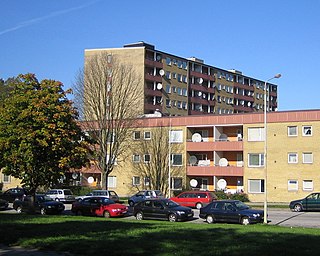
Herrgården is a neighbourhood of Malmö, situated in the Borough of Rosengård, Malmö Municipality, Skåne County, Sweden.

Roos af Hjelmsäter is a Swedish noble family of Norwegian noble and royal origin. It is among the few of Norway's medieval noble families still living.
Baron Hans Otto Carl Ramel was a Swedish landlord, Hovjägmästare, Master of the Horse and member of parliament.
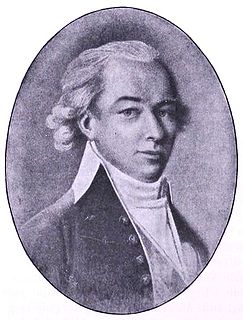
Baron Salomon Maurits von Rajalin was a Swedish Navy admiral and civil servant.

Ramsay is the name of noble family of Scottish origin. The family members bear the title of Baron in the Finnish nobility.
Radhe is a Swedish family.
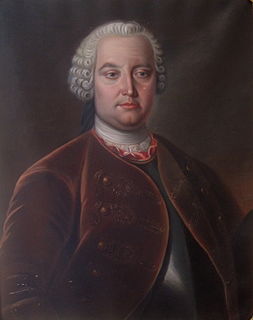
Jacob Tersmeden was a Swedish nobleman, ironmaster, assessor and member of parliament representing the House of Nobility, and brother of renowned diarist Carl Tersmeden.

The Tersmeden family, originally tor Smede, is a noble Swedish family originally from Stade that rose to prominence in the 15th-century with Thomas tor Smede, founder of one of the most prominent trading companies in northern Germany. The family was elevated to noble rank in the Kingdom of Sweden in 1751, and got introduced at the House of Nobility in 1752. The Tersmeden family consists of several branches of different noble ranks.
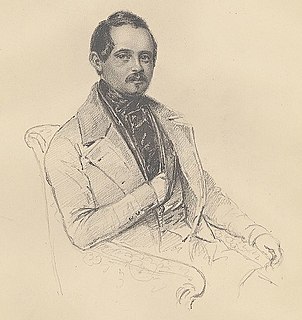
Baron Henrik Viktor Knut von Düben von Düben was a Swedish peer, Baron of Kägleholm, politician, lieutenant, estate owner, second great grandson of organist and composer Gustaf Düben.

Hedvig Charlotta Lotten von Düben was a Swedish peer, baroness of Kägleholm, diocesan miss, great-granddaughter twice of Jacob Tersmeden and great grandmother of renowned cinematographer Gunnar Fischer.

Ingeborg Walberg was a Swedish baroness and missionary.

Hinseberg is a women’s prison as of today but has formerly served as a residence for several bourgeois and noble families. The property is located next to lake Väringen in Frövi, Sweden. The manor that exists today was built in 1803 by Jacob Niclas Tersmeden (1745–1822).

Anders Gustaf von Düben,, was a Swedish freiherr, painter, diarist and military officer. Von Düben is particularly known for being the last Swedish person sentenced to exile due to his involvement in the Düben-Vegesack-treason.
Edvard Vilhelm von Düben or Eden was a Swedish peer, consul, pharmacist, lieutenant and photographer.
References
- ↑ "Schenströmska Herrgårdens historia – från 1700-talet till idag". Schenströmska Herrgården (in Swedish). Retrieved 2021-07-17.
- ↑ "Tersmeden nr 338 - Adelsvapen-Wiki". www.adelsvapen.com. Retrieved 2021-07-17.